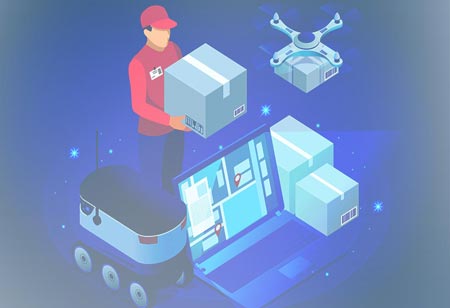THANK YOU FOR SUBSCRIBING
THANK YOU FOR SUBSCRIBING

By
Logistics Transportation Review | Monday, November 21, 2022
Stay ahead of the industry with exclusive feature stories on the top companies, expert insights and the latest news delivered straight to your inbox. Subscribe today.
There is a need for continuous tracking of last-mile delivery challenges and optimising approaches to logistics to ensure that the supply chain runs smoothly and efficiently.
FREMONT, CA: Last-mile delivery has gained momentum recently. With e-commerce sales increasing massively, the pressure to execute last-mile deliveries efficiently and predictably and to make the process transparent for consumers has never been greater. Creating a positive last-mile experience has become a significant catalyst for the consumer experience.
Retail giants have set the standards for deliveries. With the creation of their own last-mile delivery network, they can gain control and shorten delivery times from two days to same-day delivery in some markets. Regarding consumer demand, retailers have had to prioritise last-mile deliveries to stay competitive.
Most retailers intend to build out cost-efficient network capabilities offering two-day or faster delivery. On the other hand, some aim for one-day-click-to-consumer lead times in the near future. Recently, a few larger companies witnessed the economic opportunities in last-mile delivery and created a logistics network to make last-mile delivery its own revenue stream.
Many businesses have recently launched their own last-mile delivery service. Those companies observed significant benefits from the network. They aimed to create a logistical asset network they would share with business competitors, collaborating with them on their last-mile deliveries. Some companies use their national distribution network of 13 distribution centres to introduce their own automated logistics and fulfilment network, which is available to every retailer. Few platforms offer omni-channel fulfilment and return initiation for retailers without their own networks.
As the holiday season approaches, retailers and logistics companies are concerned about optimising the last mile and the post-holiday returns. Last-mile delivery technology is significant for creating an efficient last-mile delivery experience. Few companies have become experts in simplifying last-mile delivery for many businesses worldwide. This has facilitated them to build, manage, and evaluate the return on investment (ROI) of efficient last-mile delivery.
There are many ways that last-mile technology investment drives value and offers benefits. They help companies to reduce their cost per delivery, improve net promoter scores (NPS), achieve sustainability goals by reducing carbon emissions, and enhance customer service by alleviating where is my order (WISMO) calls.
Despite managing all the major supply chain issues, problems during last-mile delivery can lead to an unfulfilled order. Therefore, it is essential to take steps to ensure that the last leg of the journey in the supply chain runs smoothly and efficiently. Identifying emerging issues is a big challenge in last-mile delivery. Businesses can address challenges and develop measures to minimise complications after identifying common issues.
Both small and large businesses have their work cut out for them if they desire to keep up with their competition and maintain customer satisfaction. The situation with customer expectations and supply chain logistics is constantly changing. Therefore, it is important to continuously monitor last-mile delivery challenges and optimise approaches to logistics.
I agree We use cookies on this website to enhance your user experience. By clicking any link on this page you are giving your consent for us to set cookies. More info





